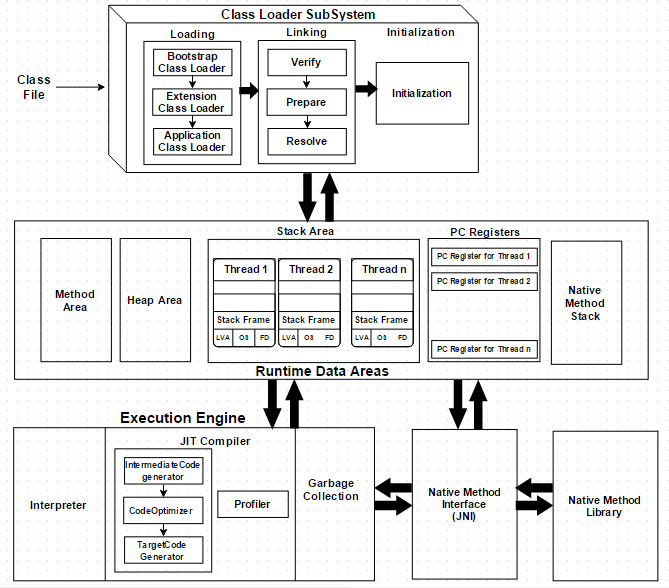The Java ecosystem is in a constant state of forward motion, with new Long-Term Support (LTS) releases like Java 17 and 21 introducing groundbreaking features and significant performance enhancements. Projects like Loom, Panama, and Valhalla continue to push the boundaries of what’s possible on the JVM. Yet, a substantial portion of the enterprise world remains firmly planted on Java 8. Its stability, vast library support, and the sheer inertia of massive, business-critical codebases make migration a daunting proposition. This creates a critical dilemma: how can organizations benefit from modern performance gains without undertaking a costly and risky migration?
Recent developments in the OpenJDK news landscape offer a compelling answer. BellSoft, a key contributor to OpenJDK, has introduced a specialized build, the Liberica JDK Performance Edition, aimed squarely at this problem. This innovative offering promises to backport significant performance optimizations from modern JVMs into a fully compatible Java 8 runtime. This article delves into the technical underpinnings of this development, exploring how modern performance is being retrofitted into a decade-old platform, what it means for developers, and how to validate these gains in your own applications. This is significant Java 8 news that could reshape performance strategies for many companies.
Why Java 8 Remains a Cornerstone of the Enterprise
To understand the significance of a performance-enhanced JDK 8, we must first appreciate its enduring legacy. Released in 2014, Java 8 introduced features like Lambda expressions and the Stream API, which fundamentally changed how Java code is written. For many organizations, it represents a stable, mature, and well-understood platform upon which mission-critical systems are built.
The Stability vs. Modernity Dilemma
The decision to stay on Java 8 is often a pragmatic one. The ecosystem around it is unparalleled. Build tools like Maven and Gradle have robust, time-tested support. Core frameworks central to Java EE news and its successor, Jakarta EE news, have stable versions targeting this runtime. The same is true for the vast landscape of Spring news, where many legacy Spring Boot applications are still running on Java 8-compatible versions. Migrating such complex applications involves more than just changing a compiler flag; it requires extensive testing, dependency updates (e.g., Hibernate news, JUnit news), and potential rewrites to accommodate breaking changes, such as the removal of sun.misc.Unsafe or the introduction of the module system in Java 9.
The Performance Gap: What Java 8 is Missing
While stable, the default JDK 8 runtime is a product of its time. The JVM has evolved dramatically since. Newer versions boast a plethora of under-the-hood optimizations that result in lower latency, higher throughput, and faster startup times. Key improvements include:
- Garbage Collector (GC) Enhancements: The G1 Garbage Collector, while available in later updates of JDK 8, became the default in Java 9 and has received countless refinements since. Modern JVMs also offer low-pause collectors like ZGC and Shenandoah, which are game-changers for latency-sensitive applications.
- JIT Compiler Optimizations: The C2 JIT compiler has been continuously improved, with better inlining heuristics, loop optimizations, and escape analysis. – Compact Strings: Introduced in Java 9, this feature halves the memory usage of most strings by using a single byte per character when possible, significantly reducing memory footprint.
Consider a simple, CPU-intensive task. While the logic is identical, the machine code generated by the JIT compiler in Java 17 or 21 is often more efficient than what a standard Java 8 JVM can produce.
public class CalculationBenchmark {
// A method representing a CPU-bound task
public static double performComplexCalculation() {
double result = 0.0;
for (int i = 0; i < 1_000_000; i++) {
result += Math.sin(i) * Math.cos(i) / (i + 1);
}
return result;
}
public static void main(String[] args) {
System.out.println("Starting benchmark...");
long startTime = System.nanoTime();
for (int i = 0; i < 100; i++) {
performComplexCalculation();
}
long endTime = System.nanoTime();
long duration = (endTime - startTime) / 1_000_000; // in milliseconds
System.out.println("Benchmark completed in: " + duration + " ms");
}
}Running this code on a standard JDK 8 versus JDK 17 would likely show a noticeable performance difference due to a decade of compiler and runtime optimizations. The goal of a performance-tuned JDK 8 is to shrink that gap significantly.

Inside the Liberica JDK Performance Edition: Backporting Modern JVM Magic
The core strategy behind enhancing Java 8 performance is the meticulous process of “backporting.” This involves identifying specific, high-impact performance patches from newer OpenJDK versions (like 11, 17, and 21) and carefully adapting them to the JDK 8 codebase without breaking compatibility. This is a surgical procedure, not a simple copy-paste, requiring deep expertise in the JVM’s internals.
The Art of the Backport: Key Features
While the exact list of backported features is proprietary, we can infer the primary areas of focus based on their impact on performance. This is a key piece of BellSoft Liberica news and a fascinating topic in the broader JVM news cycle.
- C2 JIT Compiler Enhancements: The C2 compiler is the workhorse for optimizing hot code paths at runtime. Backporting newer heuristics for method inlining, loop unrolling, and escape analysis can lead to dramatic throughput improvements for compute-heavy workloads.
- G1GC Refinements: The G1GC in modern JVMs is far more advanced than the version that shipped with Java 8. Backported improvements likely focus on reducing pause times during mixed and full garbage collection cycles, which is critical for maintaining low latency in web services.
- Optimized Intrinsics: The JVM uses “intrinsics” to replace certain Java method calls with highly optimized, platform-specific machine code (e.g., for
System.arraycopyor certainStringmethods). Backporting newer and more efficient intrinsics can speed up common operations across the board.
Practical Impact on Application Performance
For developers, these changes translate into tangible benefits without requiring a single line of code to be rewritten. A Spring Boot application, for instance, can experience immediate improvements.
import org.springframework.boot.SpringApplication;
import org.springframework.boot.autoconfigure.SpringBootApplication;
import org.springframework.web.bind.annotation.GetMapping;
import org.springframework.web.bind.annotation.RequestParam;
import org.springframework.web.bind.annotation.RestController;
@SpringBootApplication
public class PerformanceDemoApplication {
public static void main(String[] args) {
SpringApplication.run(PerformanceDemoApplication.class, args);
}
}
@RestController
class DemoController {
// An endpoint that performs some work
@GetMapping("/process")
public String processRequest(@RequestParam(defaultValue = "1000") int iterations) {
double result = 0;
for (int i = 0; i < iterations; i++) {
result += Math.log(i + 1) * Math.sqrt(i);
}
return "Processing complete. Result hash: " + Double.hashCode(result);
}
}When running this Spring Boot application on a performance-tuned JDK 8, you could expect:
- Lower Latency: The
/processendpoint would respond faster under load, thanks to more efficient JIT-compiled code and shorter GC pauses. - Higher Throughput: The server could handle more concurrent requests per second before performance degrades.
- Faster Startup: While not the primary focus, some backported class-loading optimizations could contribute to slightly faster application startup times.
Validating the Gains: Benchmarking Your Java 8 Applications
Claims of performance improvement should always be met with healthy skepticism and rigorous validation. Simply running an application and “feeling” if it’s faster is not enough. Proper benchmarking is essential to quantify the impact of switching your JDK.
Choosing the Right Tools: JMH and Profilers
The gold standard for microbenchmarking on the JVM is the Java Microbenchmark Harness (JMH). It is designed to mitigate common pitfalls like dead code elimination and improper warmup cycles that can invalidate results. For a higher-level view, profiling tools like Java Flight Recorder (JFR) and VisualVM are invaluable for observing GC behavior, CPU usage, and identifying application hotspots under a realistic load.

A Practical JMH Benchmark Example
To properly test the impact of JVM optimizations, you can create a JMH benchmark. First, you need to add the JMH dependencies to your pom.xml if you’re using Maven.
<dependencies>
<dependency>
<groupId>org.openjdk.jmh</groupId>
<artifactId>jmh-core</artifactId>
<version>1.37</version>
</dependency>
<dependency>
<groupId>org.openjdk.jmh</groupId>
<artifactId>jmh-generator-annprocess</artifactId>
<version>1.37</version>
<scope>provided</scope>
</dependency>
</dependencies>Next, write a benchmark class. This example tests the performance of a task involving object allocation and stream processing, which are sensitive to both JIT and GC performance.
import org.openjdk.jmh.annotations.*;
import java.util.concurrent.TimeUnit;
import java.util.stream.IntStream;
@State(Scope.Thread)
@BenchmarkMode(Mode.AverageTime)
@OutputTimeUnit(TimeUnit.NANOSECONDS)
@Warmup(iterations = 5, time = 1)
@Measurement(iterations = 5, time = 1)
@Fork(1)
public class StreamBenchmark {
private static final int SIZE = 10_000;
@Benchmark
public int streamProcessingWithAllocation() {
return IntStream.range(0, SIZE)
.mapToObj(Integer::valueOf) // Allocates Integer objects
.mapToInt(i -> i * i)
.sum();
}
}To validate the performance claims, you would compile and run this benchmark first on a standard OpenJDK 8 build and then again on the Liberica JDK Performance Edition. A significant decrease in the average time per operation would provide concrete evidence of the backported optimizations at work. This is a practical application of Java wisdom tips news: measure, don’t guess.
Strategic Adoption and Ecosystem Considerations
Adopting a performance-tuned JDK is a strategic decision that offers a compelling middle ground between staying on an aging platform and undertaking a full-scale migration.
When to Choose the Performance Edition

This solution is ideal for:
- Performance-Critical Legacy Systems: Applications where latency and throughput are directly tied to revenue or user experience, but a migration to Java 17 or Java 21 is currently infeasible.
- Cost-Optimization Initiatives: Improving application performance can lead to reduced infrastructure costs, as fewer server instances may be needed to handle the same load.
- Risk-Averse Environments: It provides a “drop-in” replacement for the existing JDK, minimizing the risk of introducing functional bugs that can arise from code and library changes during a version migration.
Compatibility and the Broader Java Ecosystem
A crucial advantage of this approach is its commitment to compatibility. Since the Liberica Performance Edition is a build of OpenJDK and passes the TCK (Technology Compatibility Kit), it guarantees compatibility with the entire Java ecosystem news. Your existing applications using frameworks like Spring, Hibernate, and testing tools such as JUnit and Mockito will run without modification. It sits comfortably alongside other OpenJDK distributions like Azul Zulu, Amazon Corretto, and Adoptium, offering a unique value proposition focused on retrofitting performance.
However, it’s important to recognize what this approach does *not* provide. It does not give you access to new language features or major new APIs. The exciting developments in Reactive Java news or the revolutionary concurrency models from Project Loom news (like virtual threads and structured concurrency) are still exclusive to modern Java versions. Therefore, a long-term migration strategy to Java 21 or beyond should remain on the roadmap for any organization that wants to leverage the full power of the evolving Java platform.
Conclusion: A Powerful Bridge to Modern Performance
The introduction of a performance-enhanced Java 8 JDK by BellSoft is a significant and pragmatic development in the Java landscape. It directly addresses a major pain point for a large segment of the enterprise community, offering a low-risk, high-reward path to modernizing application performance without the disruption of a full version migration. By backporting key optimizations from the last decade of JVM development, this specialized build allows legacy applications to run faster, more efficiently, and more cost-effectively.
For development teams, this means you can unlock substantial performance gains simply by changing your JAVA_HOME environment variable. While the ultimate goal for any forward-thinking organization should be to embrace modern Java versions like JDK 21 to take advantage of features like virtual threads and pattern matching, the Liberica JDK Performance Edition serves as a powerful and highly practical bridge. It ensures that even the most entrenched Java 8 applications can benefit from the relentless pace of innovation happening at the core of the JVM, keeping the entire Java ecosystem vibrant and competitive.

